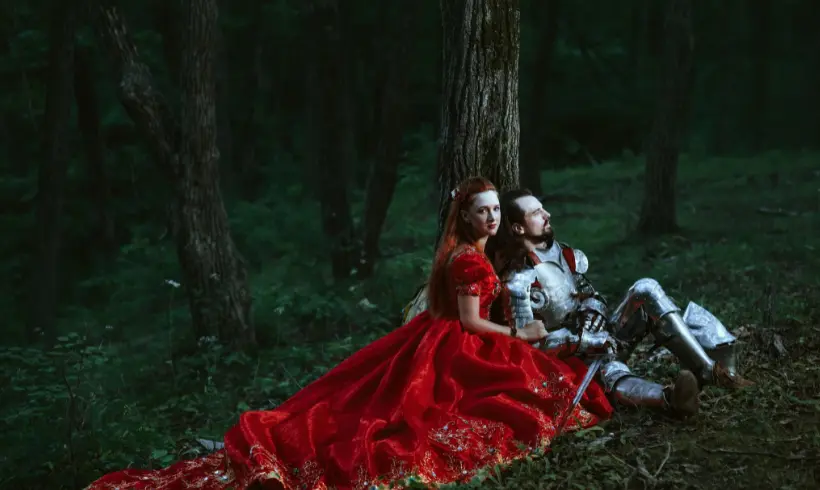In this article, we will show you the most important characteristics of the didactic novel, its most important works, and its origins.
When we think of the term “didactic”, the first thing that comes to mind is learning, knowledge, and teaching.
The didactic novel aims to do just that, with stories told exclusively to provide readers with knowledge in different areas of life and society.
Through an allegorical narrative, the authors of the genre propose multiple teachings on love, social relations, corruption, class division, etc.
At the end we invite you to visit:
| Best Books: The Best 20 Novels [Paid]
| Gifts Books: The Best 5 Novels to Give as Gifts
What is a didactic novel?
Also called an evolutionary novel, the didactic novel is a type of long story whose purpose is to leave some kind of knowledge or teachings to readers on specific topics.
The didactic novel is considered a genre belonging to didacticism, a literary movement specialized in works that instruct, but also generate pleasure.
In didacticism, entertainment is different, for example, from that found in a horror book.
With didactic novels, the authors are not concerned with keeping the audience on the edge of their seat, but rather with providing the material that is easy and entertaining to read without being exclusively an academic text.
Although the didactic novel may include certain moralizing or excessively preachy content, this is not always the case.
In fact, many authors introduce the teachings through interesting and easy-to-read stories. It is not an academic text like, for example, an encyclopedia.
Origin of the didactic novel
Although the proven origins of the didactic novel are to be found in the Middle Ages, the truth is that there is a range of cultures around the world that were responsible for spreading knowledge through oral narrative.
The parable, the fable, and the myth were the most used resources in this sense.
Another example of a didactic novel is the fairy tale since its spread throughout the world was achieved through oral tradition. The Blacksmith and the Devil was the first of these tales, and its publication dates back to 1,300 BC.
As Christianity spread its influence, the Bible became a reference for didactic literature.
The Middle Ages
The didactic novel emerged in the Middle Ages. In the medieval period, allegorical stories were tools to proclaim moral teachings.
Roman de la Rose (1225 y 1280) was one of the most important works of this era, a poem describing a dream to show readers lessons about life.
Initially, the teachings or morals of didactic fiction had love as a central theme and were directed toward women. The fable and the parable were the text types that stood out in this period.
The Pilgrim’s Progress (1678) is considered a work of classic didactic novels and is the first one written in the English language.
Subsequently, during the Victorian era, the popularity of moralistic essays grew overwhelmingly.
Later, in the 19th century, authors such as Edgar Allan Poe opposed and condemned this type of literature.
If you want to know more about this literary period, you have to read our article: Medieval Literature: Characteristics, Authors and Works.
Relevant characteristics of the didactic novel
Teaching the readers
As we have discussed so far, the purpose of didacticism as a movement is to leave some kind of message or teaching for the reader.
With the advent of Christianity, dogmas became present and morality was in the mainstream, especially with women.
Use of the parable
The parable is a type of narration in which a fictitious event is shown to leave moral learning.
The Bible is one of the works that contain the greatest number of parables. Therefore, it is not surprising that during the dominance of the Catholic Church in the Middle Ages, the movement of didacticism emerged with greater force.
Use of the second person in the narrative
The didactic novel applies a second-person perspective to connect with readers more directly.
Thus, by saying you or your, the narrators intended to give ideas or direct indications on a specific topic. Something similar happens in our time with instruction manuals and self-help books.
The moralizing fable
Narratives featuring animals as protagonists were also popular from the medieval period, and the didactic novel did not escape from this. To follow God’s doctrine and faithfully fulfill the commandments of the Bible was “to be moral” in the Middle Ages.
For this reason, fables also showed heaven as a reward and hell as a punishment to motivate people to have a higher morality.
Most famous didactic novels
Candide by Voltaire
Candide is a philosophical account published in 1759 and written under the pseudonym of Monsieur le Docteur Ralph. Voltaire never admitted to having written this work, which was considered controversial at the time.
The author uses sarcasm throughout the play to tell the story of Candide, an optimist who believes that the world he lives in is a paradise, but the reality he faces constantly contradicts him.
The work is a critique of Leibniz’s philosophy, which asserts that everything happens because there is a reason for it to happen.
Emile, Or Treatise on Education by Jean-Jacques Rousseau
This text, written as a treatise on philosophy, is considered by the author himself as his best and most important work. Published in 1762, the book presents philosophical and political themes to explain the relationship between man and society.
Ultimately, the novel proposes an educational system that allows man to feel good amid a corrupt society.
The protagonist, Emile, was born into a wealthy family and decided to grow up far from urban norms.
With the laws of nature and his own will as tools, Emile decides to be in contact with the “things” of life instead of preferring books. This is where Rousseau’s concept of “natural education” comes in.
El Criticón by Baltasar Gracián
The Criticón is a didactic novel published in three parts (1651, 1653, and 1657) and is considered Baltasar Gracián’s masterpiece.
In addition, along with Don Quixote and La Celestina, this work is considered one of the bastions of Spanish-language narrative, specifically of baroque conceptualism.
The novel aims to show the disillusionment of the world to offer moral teaching. It is a journey through the ages of the human being through a conversation between Critilo, a character who represents judgment, and Andrenio, a young man “au natural”, raised without contact with society.
Friar Gerundio de Campazas by José Francisco de Isla
Friar Gerundio de Campazas is the name by which this fictional novel, whose full name is History of the Famous Preacher Friar Gerundio de Campazas, Alias Zotes, is known.
It was published during the second half of the 18th century and represents a critique of the orators of the time and their language focused on culteranism.
Some critics consider this work a popular or costumbrista text. In addition, the author decided to use the novel to judge the degeneration that baroque art was experiencing at the time.
Los Sueños by Francisco de Quevedo
The full name of this didactic novel is Sueños y discursos de verdades descubridoras de abusos, vicios y engaños en todos los oficios y estados del mundo (Dreams and discourses of truths discovering abuses, vices and deceits in all trades and states of the world).
It is Francisco de Quevedo’s most famous work of philosophy. It was published in 1627 and is considered an essential piece of Spanish narrative during the Baroque period.
We encourage you to read these didactic novels and many more available on our website.
If you are looking for inspiration, want to study a subject in depth, or just want to feel the pleasure of reading, then we invite you to take a look at our extensive collection of +3,500 free books.
Other articles that may interest you

In the following article, you will find all the elements that make it possible to build the structure of a…

If you want to know the definition of a romance novel, its origins, and its main characteristics, this article is…

In the following lines, we tell you everything you need to know about the crime novel, including its main characteristics,…

The epistolary novel is one of the most influential literary styles in history. In this type of work, the story…

In this article, you will find the literary genre to which the novel belongs, but only after knowing the importance…

Whether to entertain or escape reality, we look for good stories to connect with our emotions, such as the satisfaction…

Below, we've compiled for you our top 10 novels that were made into movies. If you've made it to this…

Below, you will find our top 10 novels you should read. We are clear that many titles from our list…

This article contains all the information you need about adventure novels, from their origins and most relevant characteristics. In addition,…

In this article, we will explore the science fiction novel, its meaning, origins, most important characteristics, and you will learn…

What is the dystopian novel and what characteristics differentiate it from other novels? When did this style originate? What are…

In this article, we will discuss the concept of the historical novel in the literary context, its origins, and its…

Undoubtedly, the novel of chivalry is one of the most influential narrative subgenres in the world, specifically because of its…

Below you will find all the information you need about the novel as a literary genre, including its origins, characteristics,…
Novels








